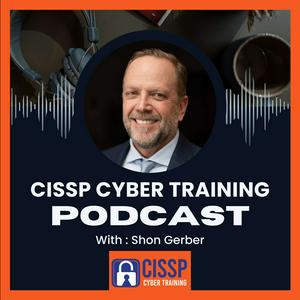CCT 291: CISSP Rapid Review Exam Prep (Domain 7) - Part #2
Send us a textYou can harden your network and still miss the front door: aging edge devices with elevated access, thin logging, and long‑ignored firmware. We dig into the uncomfortable truth behind “set it and forget it” firewalls, VPNs, and gateways, then lay out a practical Domain 7 playbook that helps you detect faster, respond cleaner, and recover without chaos.We start with the incident management sequence that actually works under pressure—detection, response, mitigation, reporting, recovery, remediation, and lessons learned—showing how legal timelines, stakeholder updates, and RTO/RPO planning fit together. From there, we map the controls that pull their weight: next‑gen firewalls and WAFs, IDS/IPS, smart whitelisting and blacklisting, sandboxing that anticipates time‑bomb malware, and when to lean on EDR, MDR, and UEBA to cut through alert fatigue.Then we get hands‑on with vulnerability and patch management, focusing on asset inventory, critical‑first prioritization, scanning automation, and staged deployments with real rollback plans. We connect the dots to change management so fixes don’t become outages. Resilience gets its due: backup integrity and rotation, hot/warm/cold recovery sites, multi‑region processing, HA pairs, QoS to preserve critical traffic, and fault‑tolerant design that keeps services running when parts fail.Finally, we round out security operations with disaster recovery drills—from tabletop to full cutover—plus business continuity planning that aligns cyber recovery with revenue‑critical processes. Physical security and personal safety close the loop: layered access, surveillance, environmental controls, and travel and duress protocols that protect your people as well as your data. If you’re preparing for the CISSP or sharpening a real program, you’ll leave with concrete steps to reduce risk now and a roadmap to mature over time.Enjoyed this deep dive? Subscribe, share with a teammate who owns Domain 7, and leave a quick review to help others find the show. Your feedback shapes future topics and tools we build for you.Gain exclusive access to 360 FREE CISSP Practice Questions at FreeCISSPQuestions.com and have them delivered directly to your inbox! Don’t miss this valuable opportunity to strengthen your CISSP exam preparation and boost your chances of certification success. Join now and start your journey toward CISSP mastery today!


